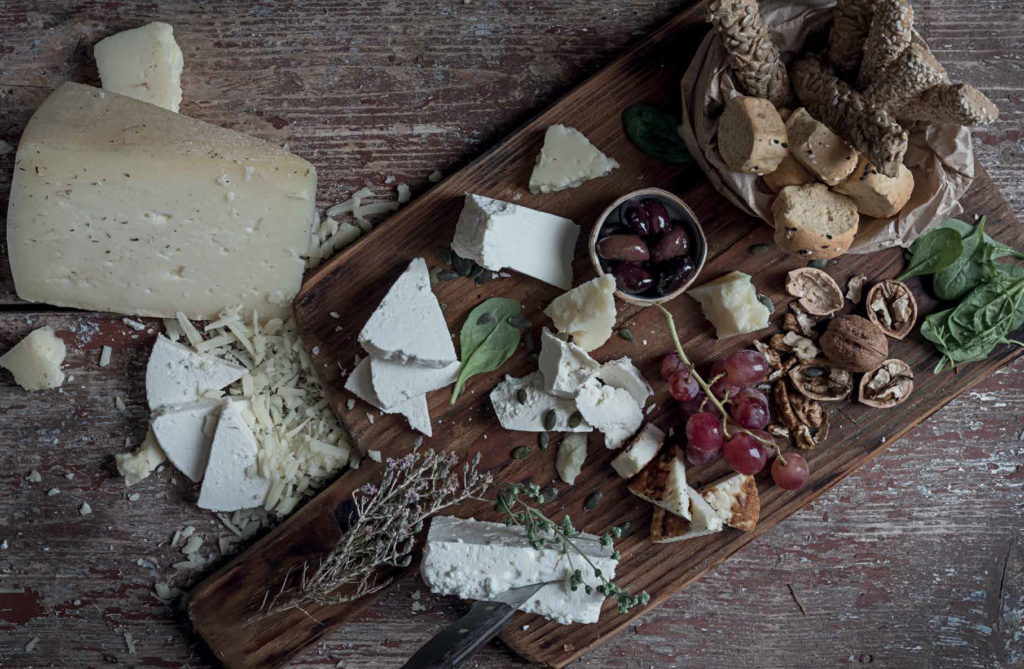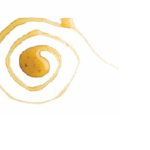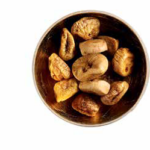An ancient secret that travels through the ages, reaches Greece’s highest mountains and the most sunbathed beaches of its islands, and reveals the true meaning of craftsmanship and local tradition. Art is for the lovers; travel for cheese, explore new cheeses, create cheese, cook with cheese!

Cheese
WHAT A HISTORICAL TASTE…
 Soon we came to the cave, and found him absent, he was grazing his well-fed flocks in the fields. So we went inside and marveled at its contents. There were baskets full of cheeses, and pens crowded with lambs and kids, each flock with its firstlings, later ones, and newborn separated. The pails and bowls for milking, all solidly made, were swimming with whey. At first my men begged me to take some cheeses and go, then to drive the lambs and kids from the pens down to the swift ship and set sail. But I would not listen, though it would have been best, wishing to see the giant himself, and test his hospitality. […] So we lit a fire and made an offering, and helped ourselves to the cheese, and sat in the cave eating, waiting for him to return, shepherding his flocks”.
Soon we came to the cave, and found him absent, he was grazing his well-fed flocks in the fields. So we went inside and marveled at its contents. There were baskets full of cheeses, and pens crowded with lambs and kids, each flock with its firstlings, later ones, and newborn separated. The pails and bowls for milking, all solidly made, were swimming with whey. At first my men begged me to take some cheeses and go, then to drive the lambs and kids from the pens down to the swift ship and set sail. But I would not listen, though it would have been best, wishing to see the giant himself, and test his hospitality. […] So we lit a fire and made an offering, and helped ourselves to the cheese, and sat in the cave eating, waiting for him to return, shepherding his flocks”.
Odysseus, hiding in his cave, secretly watches Cyclops Polyphemus doing everyday chores of a cheesemaker. Indeed, in Homer’s Odyssey, we find the first mentions of him as one of the first known cheesemakers, and a famous one for his expertise. His primitive cheese was a fresh one, something probably like Greek Feta, and, judging by the historical mentions, it was broadly appreciated, along with Polyphemus’s technique and craftsmanship. The historical journey of cheese seems to be quite a long one; an Odyssey of innovations and evolution, a gift of eternal value that the gods gave to the people, as it is stated in Greek mythology. Since then, people’s interest for cheese never seemed to stop.
MILESTONES OF CHEESE’S HISTORY
 Around 8000 B.C. at the highlands of Iran, the first goats are domesticated, a fact that initiated interest in dairy products overall. Not by chance, a thousand years later, a massive influx of cattle from Asia happened in Europe, because temperate climate allowed for huge grasslands to flourish and animals to be healthy and productive. Simultaneously, an Asian myth talks about the first accidental cheesemaker; a shepherd who thought to carry milk inside a goat’s stomach and was lucky enough to indulge into a great fresh cheese a couple of hours later, as whey was produced in the animal’s intestines and transformed the milk into curd. Some centuries later, wild cow is domesticated for the first time in Greece from nomad tribes, who start using their meat and milk, and, from then on, the history of cheese is mainly played and evolved in Mediterranean land. In the Roman years, cheese is much loved and crafted; Romans created a specific kind of round cheese named “Luna”, that weighted a ton and had a 2 meter-diameter. During the years they were conquering Europe, they put guard troops everywhere, including Greek land, and sometimes the kings forgot about them, so the soldiers started breeding animals for food, and taught the locals how to make cheese.
Around 8000 B.C. at the highlands of Iran, the first goats are domesticated, a fact that initiated interest in dairy products overall. Not by chance, a thousand years later, a massive influx of cattle from Asia happened in Europe, because temperate climate allowed for huge grasslands to flourish and animals to be healthy and productive. Simultaneously, an Asian myth talks about the first accidental cheesemaker; a shepherd who thought to carry milk inside a goat’s stomach and was lucky enough to indulge into a great fresh cheese a couple of hours later, as whey was produced in the animal’s intestines and transformed the milk into curd. Some centuries later, wild cow is domesticated for the first time in Greece from nomad tribes, who start using their meat and milk, and, from then on, the history of cheese is mainly played and evolved in Mediterranean land. In the Roman years, cheese is much loved and crafted; Romans created a specific kind of round cheese named “Luna”, that weighted a ton and had a 2 meter-diameter. During the years they were conquering Europe, they put guard troops everywhere, including Greek land, and sometimes the kings forgot about them, so the soldiers started breeding animals for food, and taught the locals how to make cheese.
Later on, Byzantines loved the Greek cheeses, and, in their times, cheesemaking became an acknowledged profession. In manuscripts we read about impressive feasts that included Mizithra cheese, an otherwise humble cheese that accompanied cooked vegetables in middle to low-class Greek tables. It is interesting that Mizithra was so important for the whole area where it was produced, that it gave its name to the famous Mistras of Peloponnese (Mizithra>Mizithras>Mistras).
Other soldier populations had also discovered and appreciated the dietary value of cheese, like the ancient Spartan warriors, who would never come to battle malnourished and considered cheese as one of the main components of their meal. In Sparta, there was also a special ceremony for young men entering the age of manhood (12-13 years), where elder men would hide chunks of cheese in secret places and the teenage boys would have to find as many as possible, in order to earn their right to fight with the great Spartans.
Many European and Arabic scripts talk about Crete and specifically Chania as a great cheese-producing area called “Tiropolis” (city of cheese). Impressive proof of sophistication comes from Aristotele who writes about a cheese from Frygia as one of the best of its time, made from donkey milk mixed with fig juice. Around 200 B.C. we find mentions of another famous Greek white cheese named “Kithnos”, which was wildly popular all over Greece and also conquered the Roman Agora in very high prices. The gourmet finding earned its great taste from the goats and sheep’s main food, a bush named “Kitisos”, found in the salty grasslands of Kithnos island.
Overall, Greeks seem to have pretty good knowledge of a good cheese since the ancient times (maybe it’s not completely random they also knew much about wine, but more on that later…). Remember that up until this point we talk about soft cheeses, until the Romans brought their knowledge on new kinds of cheese and experimentation in Greece just explodes. From the impressively fast and enthusiastic way that every population accepted, included and evolved cheese use in their meals, it is safe to say that, the cheeseworld is still up for grabs!

